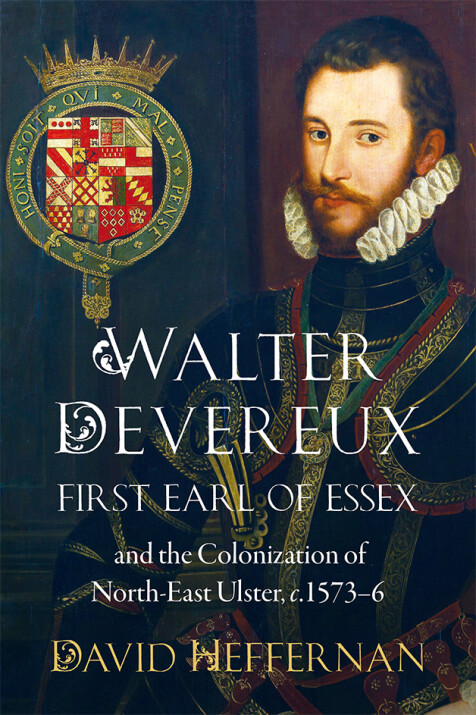Walter Devereux, first earl of Essex, and the colonization of north-east Ulster, c.1573–6
David Heffernan
"The author in this book provides the reader with a chronological survey of Essex’s time in Ireland. Essex was an inveterate letter writer and left behind him a weighty correspondence with London and Dublin. Heffernan uses this abundance of evidence to great effect, and his handling of other archival materials, including Essex’s household accounts, is very well executed in order to tell us the story of the earl’s disastrous sojourn in Ireland ... Heffernan gives Essex’s failed attempt to colonise east Ulster the time and space (in what is nevertheless a relatively slim volume) to fully unfurl and reveal itself. This is an excellent reading of a hitherto lesser-known and understood episode in Tudor Ireland and the author is to be commended, not only for taking on this topic, but also for his deft use of a wide range of primary sources from this period", Brendan Scott, Breifne (2019).
"In this carefully researched book, David Heffernan shows that the first earl of Essex's 'enterprise' to colonise north-east Ulster represented an important episode in the history of Elizabethan Ireland ... [Heffernan offers] a chronological narrative of Essex's three years in Ireland. The earl did not keep a diary or journal, but he left behind an ample correspondence with the crown officials in London and Dublin. Heffernan expertly exploits this reservoir of evidence ... This definitive telling of Essex's enterprise is enhanced by twelve illustrations - maps, photographs of important locations, portraits and reproductions of documents - which are interspersed to good effect throughout the text ... Though the first earl of Essex's enterprise lacked the high political and personal drama of 1599, this book shows that the earlier episode was in fact the more revealing example of Elizabethan activity in Ireland", Christopher Maginn (2019).
"This book is therefore to be welcomed as a significant contribution to the understanding of how an individual scheme evolved in particular circumstances. Its approach is primarily chronological, creating a narrative of a little-understood event on its own terms rather than as part of a wider argument about the nature of sixteenth-century Ireland ... For such studies, this is a model to follow with its rigorous analysis of sources and its careful narrative." Raymond Gillespie (Irish Economic and Social History)

